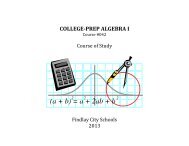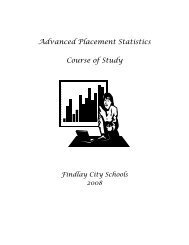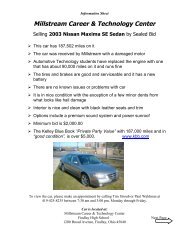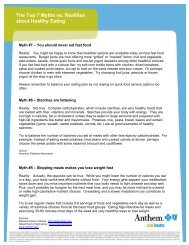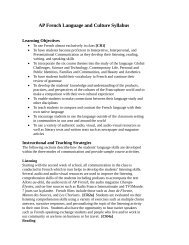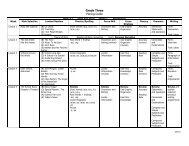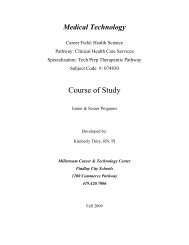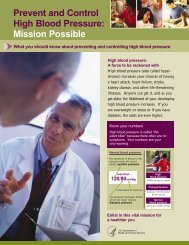Fixed Asset Policy - Findlay City Schools
Fixed Asset Policy - Findlay City Schools
Fixed Asset Policy - Findlay City Schools
Create successful ePaper yourself
Turn your PDF publications into a flip-book with our unique Google optimized e-Paper software.
Board of Education <strong>Policy</strong> <strong>Findlay</strong> <strong>City</strong> School District 4.19 Vehicles Vehicles include all over the road, licensed vehicles are well as school buses owned by the District. Construction in Progress Construction in progress is used for the temporary segregation and accounting of expenditures related to the construction of capital assets prior to occupancy or use. Expenditures include construction costs, including costs withheld for retainage, architect, engineer and permit fees, equipment in storage, interest costs applicable to the period of construction, and other costs required to finish the project. Construction in progress should not be depreciated and should be shown separately on the Statement of Net <strong>Asset</strong>s with other non-‐depreciable assets such as land and permanent land improvements. Interest capitalization is required as a component of the historical cost of capital assets regardless of the fund. Authoritative guidance may be found regarding qualifying assets in SFAS No. 34 and SFAS No. 62. Collections Library books and other collections of material value having a useful life of more than one year are considered capital assets. Library books are maintained as a unit or batch asset and consist of large number of books with a relatively modest value per book. Consequently; the collection is valued and depreciated as a group. <strong>Asset</strong> Valuation According to GASB Statement 34, paragraph 18, “capital assets should be recorded at historical cost. The cost of a capital asset should include capitalized interest and ancillary charges necessary to place the asset into its intended location and condition for use. Ancillary charges include costs that are directly attributable to asset acquisition – such as freight and transportation charges, site preparation costs, and professional fees. Donated fixed assets should be recorded at their estimated fair value at the time received plus any ancillary charges, if any”. Cost is defined as the cash price, or its equivalent, plus all other costs necessary to place the asset in its intended location and condition for use. Sources of historical cost data can include: invoices, purchase orders, cancelled checks, vouchers, contracts, board minutes, general ledger records, real estate closing documents, tax assessment records, grant records, inventory cards, maintenance records, price lists, vendors, appraiser’s libraries, back-‐trend multipliers, etc. Sources of reproduction/standard cost data can include: manufacturer’s price lists, catalogs and quotations; distributor’s and supply company catalogs; industry publications, magazines, director’s and trade journals; consulting, cost engineering, cost estimating manuals and handbooks; technical service companies; and organizations and appraiser’s libraries. Sources of normal cost data can include published prices, such as the Consumer’s Price Index (CPI) and back-‐trend factors. Whatever process is chosen, documentation should be retained for audit purposes. Land and Land Improvements Items included as part of the acquisition cost for land: purchase price, legal and title fees, site preparation, including demolition of existing buildings, and damage payments. 4



